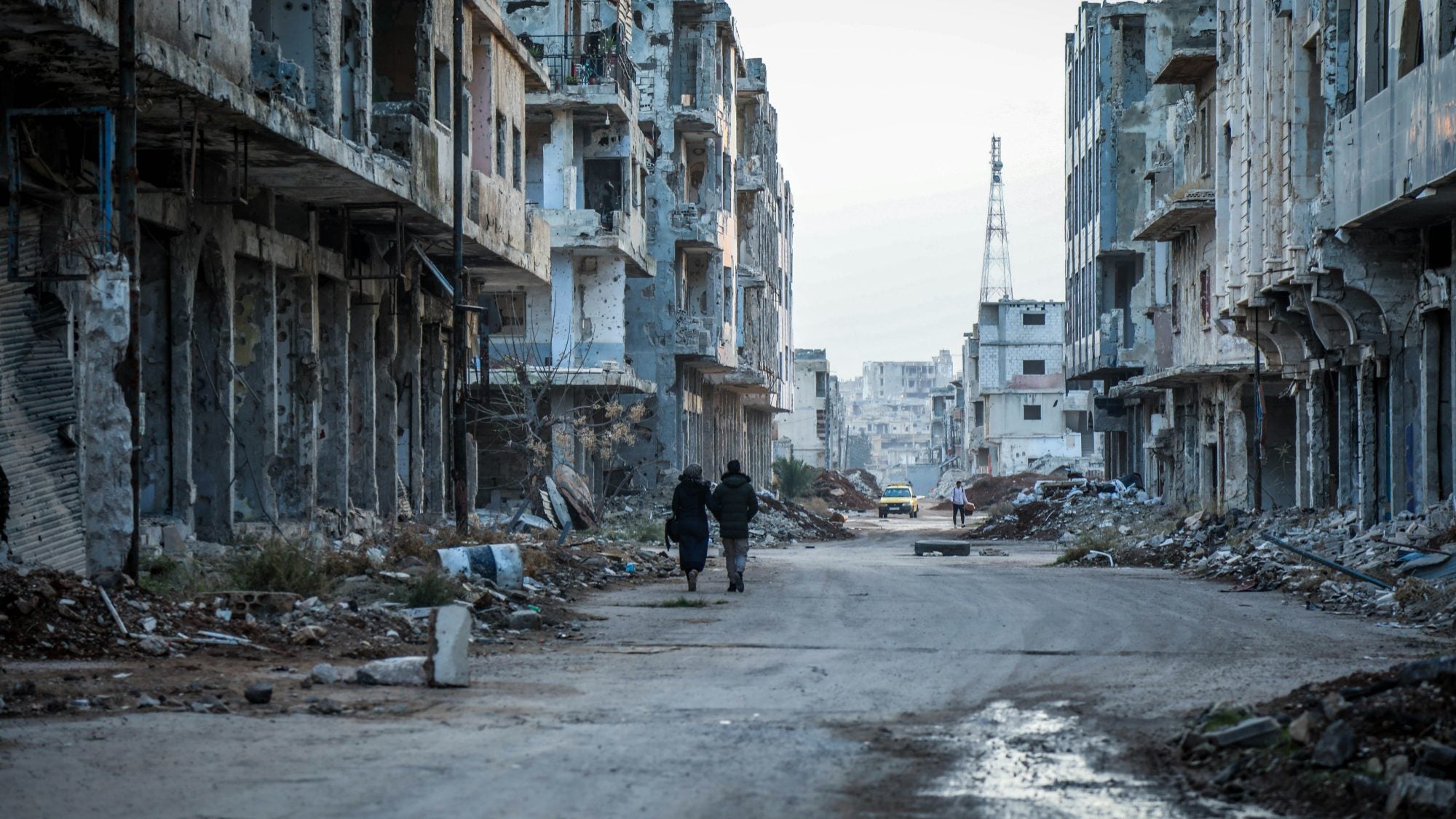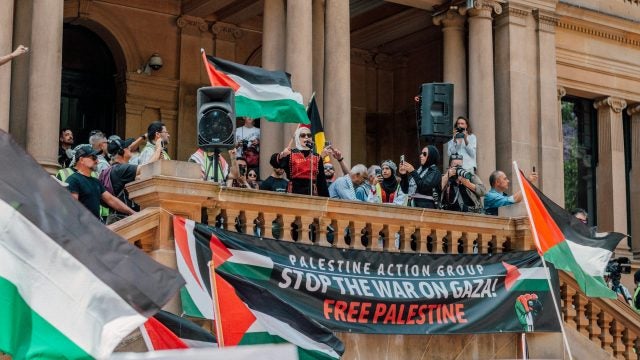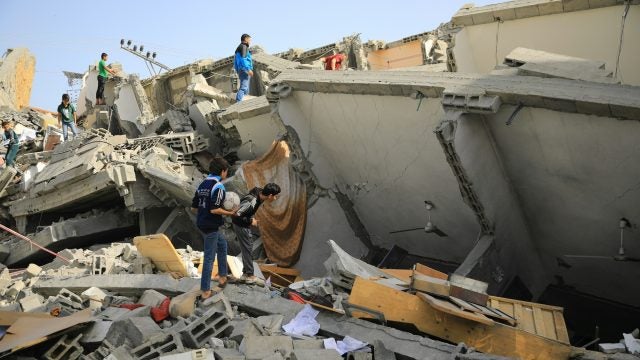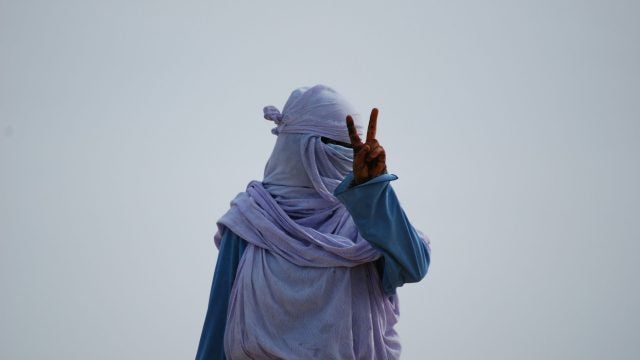
Title: The Long Horizon of Returns to Syria
The fall of the Assad regime in Syria has raised the possibility of millions of internationally displaced Syrians returning to their homeland. However, Syria’s capacity to absorb initial returnees, the willingness of returnees to stay in Syria, and the desire of Syrians abroad to venture back are largely unknown and subject to change. The situation in Syria remains dire, with a lack of basic infrastructure, essential services, physical safety, and economic opportunities. Overcoming these challenges will require immense resources and time, meaning that planning for returns must be a long-term endeavor. The international community should play a central role in laying the groundwork for safe voluntary returns to Syria by establishing frameworks to facilitate circular mobility, supporting diaspora investment in Syria, and implementing dual-intent integration support to prepare potential returnees.
Introduction
On December 8, 2024, the Assad regime in Syria fell after nearly fourteen years of civil war. Over the course of the conflict, more than 6 million Syrians were displaced internationally, while a further 7.4 million became internally displaced (IDPs). But, in the five months since Assad’s fall, more than 372,000 internationally displaced Syrians have voluntarily returned home, a number projected to reach 1.5 million by 2025, according to the United Nations High Commissioner for Refugees (UNHCR). While some have traveled from as far as North America, returnees primarily come from Syria’s neighboring countries—Turkey, Lebanon, Jordan, and Iraq—which have hosted the vast majority of Syrian refugees throughout the conflict. In addition, UNHCR estimates that 1.95 million Syrian IDPs have returned to their towns and regions of origin.
However, these numbers alone do not paint a clear picture. Syria’s capacity to absorb these initial returns, the willingness of returnees to stay in Syria, and the desire of Syrians abroad to venture back are largely unknown and subject to change as conditions on the ground remain volatile.
The international community is grappling with this difficult reality. Following the collapse of the Assad regime, governments in Austria and Lebanon signaled a desire to expedite and encourage the return of Syrians. During Germany’s February 2025 election campaign, politicians debated which Syrians would return, based on perceived integration and skill level, and on what timeline. While the international community has largely followed UNHCR’s guidance and avoided forcible returns to Syria, it remains unclear how long governments will maintain this position. In public sessions at the March 2025 Brussels donor conference, the Dutch and Austrian representatives explicitly emphasized the importance of encouraging a swift recovery for Syria and return for refugees. These sentiments contradict the broad recognition that Syria’s reconstruction and stabilization will take years.
This article explores the factors in Syria that are hindering the sustainable return of internationally displaced Syrians and the steps that host countries can take to overcome them. Additionally, it presents alternatives to return for Syrians who prefer to stay in their countries of current residence, but still wish to contribute to state reconstruction.
Syria’s Challenges for Returnees
Returning to Syria on a voluntary basis is possible: hundreds of thousands have already chosen to do so. UNHCR has implemented an Operational Framework to support a mass influx of returnees, including access to financial and transportation assistance, counseling and guidance in host countries, and connections to resources within Syria. However, returnees—even those on short go-and-see visits—have been confronted with a difficult reality. Regardless of the effectiveness of the new interim government, material realities mean that the state has limited capacity to absorb a large, sudden inflow of returnees.
First, basic infrastructure and essential services are absent in much of the country. Electricity is scarce—the state has only been able guarantee two hours per day, although a gas deal with Qatar signed in March 2025 hopes to double output. Housing is hard to find; many returning Syrians have discovered their former properties either destroyed or occupied by other families. The country’s health infrastructure is dysfunctional: only 37 percent of Syria’s primary care centers and 57 percent of hospitals are fully operational. Coupled with persistent shortages of supplies and outdated equipment, the medical system is unable to help the estimated 15.8 million people requiring urgent assistance. A swift upsurge in demand from repatriations would likely further hamper and overwhelm these strained systems.
Second, the physical safety of returnees is not assured. Unexploded ordnance and mines litter the landscape, killing and wounding civilians, and conflict persists in parts of the country. Furthermore, several actors hostile to the interim government are stoking tensions and violence. On the western coast, pro-Assad forces have ambushed state security forces, triggering mass mobilizations and civilian casualties. At the same time, Israel is attempting to destabilize the government by inflaming sectarian tensions, conducting periodic airstrikes, and deploying forces beyond the internationally-recognized demilitarized buffer zone. An influx of returnees at this precarious moment could place additional civilians in danger or exacerbate social tensions.
Finally, there are few economic opportunities available in Syria, a problem aggravated by an ongoing liquidity crisis and crippling U.S. sanctions. The interim authorities face barriers to harnessing the full potential of Syrian civil society, who gained critical governance in standing up substitute state organs in rebel territory. However, the continued designation of HTS as a Foreign Terrorist Organization means that technocrats and civil society organizations risk facing criminal charges or losing their ability to accept international funding, if they begin cooperating with the government.
Indeed, history shows that overcoming challenges in these three key areas will take immense time and resources. Post-conflict recovery is an arduous process: it took decades for Japan to make a full economic recovery following World War II, and in Iraq, the international community spent $220 billion on reconstruction efforts between 2003 and 2014 only for conflict to return. With so much in flux, there is no guarantee any returns will be sustainable, or that Syrians living abroad will want to return. As such, attempts to force repatriation will only undermine any long-term plan for sustainable reintegration.
How Can the International Community Help
If the international community desires a stable Syria to which refugees can safely return, it must begin investing in fundamental drivers of recovery and reconstruction. Migration policymakers should prioritize long term planning aimed at facilitating voluntary returns and creating ways for the diaspora community to engage with their homeland—even if they do not choose to return on a permanent basis.
To start, host governments should create or adjust legal frameworks to enable regular mobility for refugees to and from Syria. In many countries, such as Germany and Jordan, those who only have short-term or insecure residency status risk losing their protection if they return to Syria for any length of time, discouraging those wishing to explore the possibility of a return. Governments should consider adjusting their protection policies and grant permission for temporary visits to Syria for members of the diaspora regardless of their status, programs which Turkey has established and France has promised. Simultaneously, host governments could experiment with circular mobility programs that would allow Syrians to move back and forth between Syria and their current countries of residence. These policies could help Syrians make better informed decisions about their next steps as well as facilitate diaspora investment and reconstruction support, while having a fallback plan should the situation worsen.
For Turkey, Lebanon and Jordan, these considerations are more complex. Syria’s neighbors may face increased public expectations that Syrians will return home if the situation improves. Additionally, these countries will rightly want to remain cautious about facilitating too much openness along their borders, especially given the persistence of extremist elements within Syria.
Nevertheless, they will be central to answering questions about Syria’s citizens who have been displaced and its future as a state. Syria’s reconstruction—which is critical to the security of the region and the safety of eventual returnees—will need to be facilitated directly from neighboring countries. A managed reopening of borders and a structured development of free mobility agreements would enable mutually beneficial development initiatives. For example, local construction companies based in Syria could begin training and hiring Syrian refugees without forcing them to permanently relocate into the country. At the same time, they would lay the groundwork to resume robust cross-border trade and the flow of goods.
Host countries should be proactive. As Syria’s future remains in the flux, they should not rush to repatriate displaced Syrians; rather, in the interim, they can make efforts to facilitate the Syrian diaspora’s contribution to Syria’s recovery from abroad and prepare for potential voluntary return. This can take a two-pronged approach. First, governments can create increased opportunities for the Syrian diaspora to send financial remittances and share a wealth of expertise and knowledge gained abroad. The establishment of new banking provisions would be an important step to allow the Syrian diaspora to participate in economic activities in Syria. Additionally, host countries should actively facilitate knowledge sharing platforms and partnerships with key sectors in Syria. For example, the German government is funding partnerships between German hospitals and medical NGOs and Syrian counterparts to help rebuild the Syrian health sector.
Second, governments should adjust their integration support for Syrians in anticipation for potential returns to Syria. Rather than focusing on training Syrians to fill occupation and skill gaps in their country of residence, host countries should prioritize the acquisition of skills that could aid in Syria’s own recovery efforts. Governments are already experimenting with similar dual-intent integration approaches for Ukrainians and should recognize the need for similar strategies for displaced Syrians.
Conclusion
Against the backdrop of such rapid and ongoing changes in post-Assad Syria, the international community must devise strategies to best support Syria’s reconstruction and the safety of its diaspora. The situation on the ground in Syria remains precarious and large-scale returns cannot be rushed; however, host countries should begin to plan for facilitating voluntary returns and circular mobility in the long run. For those who choose to stay abroad, there is a pressing need to expand opportunities for them to actively contribute to Syria’s reconstruction and recovery efforts. And while the fall of Assad’s brutal dictatorship is a positive step for the future of the country, the international community as a whole must recognize that there is a small window of opportunity to get the transition right. Following the currents of public opinion that are pushing for expedited and more decisive repatriation policies will only lead to further instability, preventing a safe, dignified, and sustainable future for Syria, its people, and its diaspora.
. . .
Samuel Davidoff-Gore is an Associate Policy Analyst with MPI’s International Program, where he focuses on asylum and protection policy, forced displacement, and development approaches to refugee responses. He holds a master’s degree with honors from the Johns Hopkins University School of Advanced International Studies, where he concentrated in international economics and international law and organizations. He earned his bachelor’s degree with honors from Brown University, where he concentrated in international relations.
Image Credit: Mahmoud Sulaiman, Unsplash Content License, via Unsplash.
Recommended Articles

This piece examines the UK government’s proscription of Palestine Action under the Terrorism Act, situating it within a broader trend of shrinking space for public dissent. It argues that the…

This article analyses the distortions of the International Humanitarian Law (IHL) notion of proportionality in the context of the Israel-Gaza war. It discusses Israel’s attempts to reinterpret proportionality to justify…

The escalating women’s rights crisis in Afghanistan demonstrates a gap in international legal protections of the rights of women and girls. The international community should fill this gap by making…